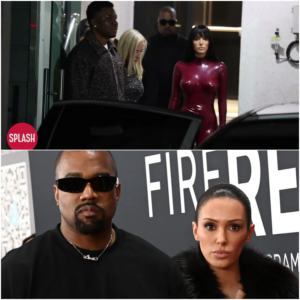Sometimes in Formula 1, It’s Not About Winning: It’s About the Fight
In Formula 1, glory is measured in tenths of a second, podiums, and championship points. But sometimes, the true essence of racing isn’t about the trophies—it’s about the grit, the choices made when the odds are stacked high, and how a driver responds in those moments. That theme roared to life at the 2025 Spanish Grand Prix, when two world champions faced pressure in very different ways—and only one truly fought.

The Spanish Grand Prix: A Tale of Two Champions
With just a few laps to go, the drama at Circuit de Barcelona-Catalunya exploded. Mercedes junior Kimi Antonelli’s engine failed and buried itself in the gravel, prompting a late safety car. As the field bunched up, tension skyrocketed. Max Verstappen sat in P4 on worn hard tires, Charles Leclerc right behind him, George Russell looming, all of them eyeing the podium. The restart was chaos.
Leclerc lunged and made contact, snatching third. Russell followed suit. But Verstappen, even with a looming race ban hanging over him due to points on his Super License, fought back like a street brawler. Contact flew, wheels clashed, and Max got slapped with a 10-second penalty. It didn’t matter. He fought for every inch of tarmac.
And then… there was Lewis Hamilton.
While Verstappen, Leclerc, and Russell battled for every scrap of advantage, Hamilton, running in sixth, quietly let Nico Hülkenberg in a Sauber slip past him with no resistance. No defensive move. No counterattack. Just… silence.
The Question That Followed
Pedro de la Rosa, watching from the commentary box, said what many were thinking: “He saw it was a Sauber, thought it didn’t matter.” But it did matter—to fans, to rivals, to Hamilton’s image as a relentless competitor. Former Red Bull driver Sébastien Buemi called it out even more bluntly: “Max doesn’t give up. That’s just who he is. Lewis? I was surprised he let it go.”
Sure, Hamilton ultimately got the place back after Verstappen’s penalty. But the damage was done—at least to perception. The question lingered: Did Lewis give up?
It’s a stark contrast. Verstappen is under pressure, staring down potential suspension, yet he fights to the edge of the rules. Hamilton, meanwhile, is the new face of Ferrari, still searching for his first podium in red, and in this moment, he backed off.
Which brings us to the bigger picture: What’s really going on at Ferrari?

Behind the Scenes: Ferrari’s F1 Identity Crisis
When the 2025 season began, Ferrari had every reason to believe. Charles Leclerc had recommitted. Lewis Hamilton, a seven-time world champion, walked through the gates of Maranello with one goal: to bring the Scuderia back to glory. A revamped technical team was in place. The mission was clear: end the drought and return Ferrari to the top for the first time since 2008.
But Formula 1 doesn’t run on sentiment. Nine races in, Ferrari is winless. Hamilton is still off the podium. Leclerc is carrying the team to second in the Constructors’ standings—but McLaren sits nearly 200 points ahead.
At the center of this pressure cooker is team principal Fred Vasseur.
While Vasseur has defended his team and pointed to inherited technical challenges—particularly the persistent ride height issues of the SF-25—the reality is hard to ignore. Ferrari is patching up a flawed car while their rivals surge ahead.
Meanwhile, Le Mans beckons, and another man wearing Ferrari red is making noise of his own.
Antonello Coletta: The Shadow Leader?
Antonello Coletta, head of Ferrari’s World Endurance Championship program, has built a monster. Under his leadership, the 499P Hypercar has claimed back-to-back victories at Le Mans and is gunning for a third. Inside Ferrari HQ, whispers about his leadership have turned into serious conversations. According to Corriere della Sera, Ferrari’s top brass are actively evaluating Vasseur’s position—and Coletta is the name on everyone’s lips.
He’s reportedly turned down the F1 role in the past, but things are different now. Coletta represents Ferrari’s DNA: racing heritage, passion, and results. If the SF-25 continues to flounder, the symbolic weight of another Le Mans victory—coinciding with another mediocre Grand Prix weekend—could tip the scales.

Red Bull: From Disruptors to Dynasty
And then there’s Red Bull. While Ferrari debates leadership and Mercedes rebuilds, Red Bull, the team once mocked for being a fizzy drink sideshow, now stands as a dynasty.
At the helm is Christian Horner. Two decades ago, when Red Bull bought Jaguar in 2005, he became the youngest team principal in the sport. Many doubted him. But alongside Adrian Newey, Horner helped turn Red Bull into a 14-time world championship-winning machine.
Today, with 124 wins and a win rate over 30%, Red Bull is the standard. And Horner? Still leading the charge. Rumors have linked him to Ferrari and Alpine, but he’s not interested. “My heart and soul are here,” he said in Barcelona.
Horner’s story is a reminder of what long-term vision, trust, and culture can do. Red Bull doesn’t just race to win—they race to disrupt. From Star Wars pit crews to building their own power units in-house, Red Bull thrives on audacity. And Horner? He’s planning for race 500 and win 200.
The Battle Beneath the Surface
So, back to the original point: Sometimes Formula 1 isn’t about who wins the race. Sometimes it’s about what a driver—or a team—chooses to fight for.
Verstappen didn’t back down. Hamilton, for whatever reason, did. Ferrari’s future is being debated not in laps, but in boardrooms. And Red Bull? They’re proving that you can go from rebels to rulers if you build the right culture.
In that sense, the 2025 Spanish Grand Prix was more than just a race. It was a snapshot of shifting momentum, of legacy under threat, and of fight—the kind that defines more than just positions on a track. It defines what kind of racer, and what kind of team, you really are.
Full Video:




